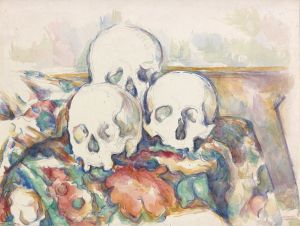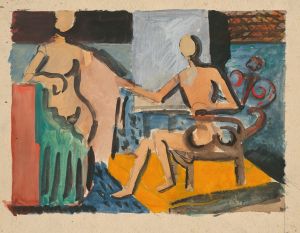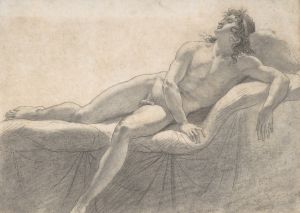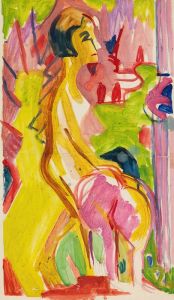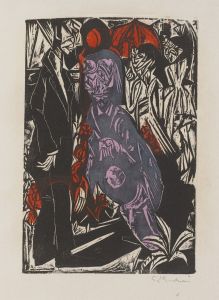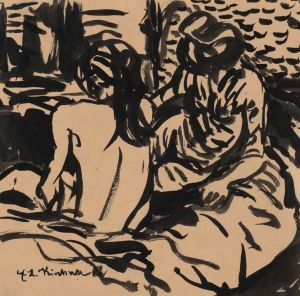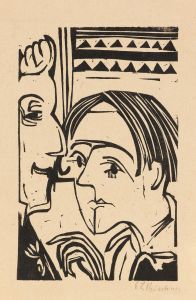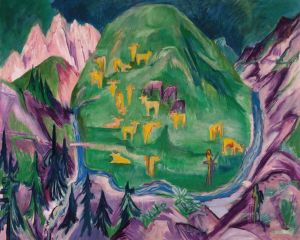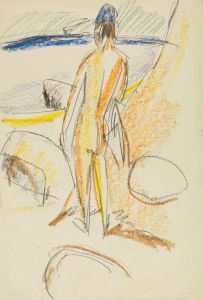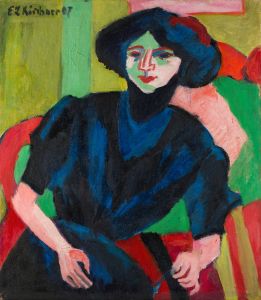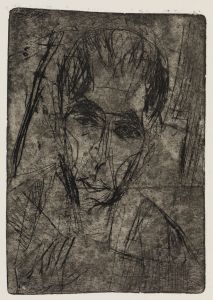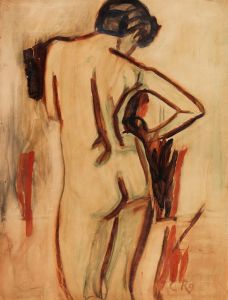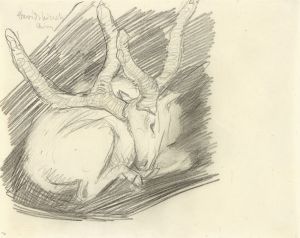
Lying nude
A hand-painted replica of Ernst Ludwig Kirchner’s masterpiece Lying nude, meticulously crafted by professional artists to capture the true essence of the original. Each piece is created with museum-quality canvas and rare mineral pigments, carefully painted by experienced artists with delicate brushstrokes and rich, layered colors to perfectly recreate the texture of the original artwork. Unlike machine-printed reproductions, this hand-painted version brings the painting to life, infused with the artist’s emotions and skill in every stroke. Whether for personal collection or home decoration, it instantly elevates the artistic atmosphere of any space.
Ernst Ludwig Kirchner, a prominent German expressionist painter and one of the founding members of the art movement Die Brücke (The Bridge), created numerous works that explored themes of modernity, human emotion, and the human form. Among his notable works is the painting "Lying Nude," which exemplifies his distinctive style and approach to the depiction of the human figure.
"Lying Nude" reflects Kirchner's interest in the human body as a subject of artistic exploration, rendered in a manner that emphasizes emotional intensity and rawness over naturalistic representation. The painting features a reclining nude figure, a common motif in Kirchner's oeuvre, characterized by bold, angular lines and a vibrant, non-naturalistic color palette. These stylistic choices are hallmarks of Kirchner's expressionist approach, which sought to convey the inner emotional experience rather than adhere to traditional notions of realism.
Kirchner's work often drew inspiration from non-Western art forms, particularly African and Oceanic art, which influenced his simplified forms and dynamic compositions. This influence is evident in "Lying Nude," where the figure's pose and contours are stylized, emphasizing the emotional resonance of the subject rather than anatomical precision. The painting also reflects the broader goals of the Die Brücke movement, which aimed to break away from academic traditions and embrace a more direct, unfiltered expression of modern life.
The context of Kirchner's life and career is essential to understanding his work. Born in 1880 in Aschaffenburg, Germany, Kirchner studied architecture before dedicating himself fully to painting. In 1905, he co-founded Die Brücke in Dresden, a group of young artists who sought to create a "bridge" between traditional and modern art. The group was instrumental in the development of German Expressionism, and their work often explored themes of urban life, nature, and the human condition.
Kirchner's career was deeply affected by the political and social upheavals of his time. His experiences during World War I, combined with personal struggles and the rise of the Nazi regime, which labeled his work as "degenerate art," had a profound impact on his mental health and artistic output. Despite these challenges, Kirchner's contributions to modern art remain significant, and his works are celebrated for their innovative style and emotional depth.
"Lying Nude" is housed in a private collection or museum, though specific details about its current location are not widely documented. The painting continues to be recognized as an important example of Kirchner's exploration of the human form and his contribution to the Expressionist movement.






